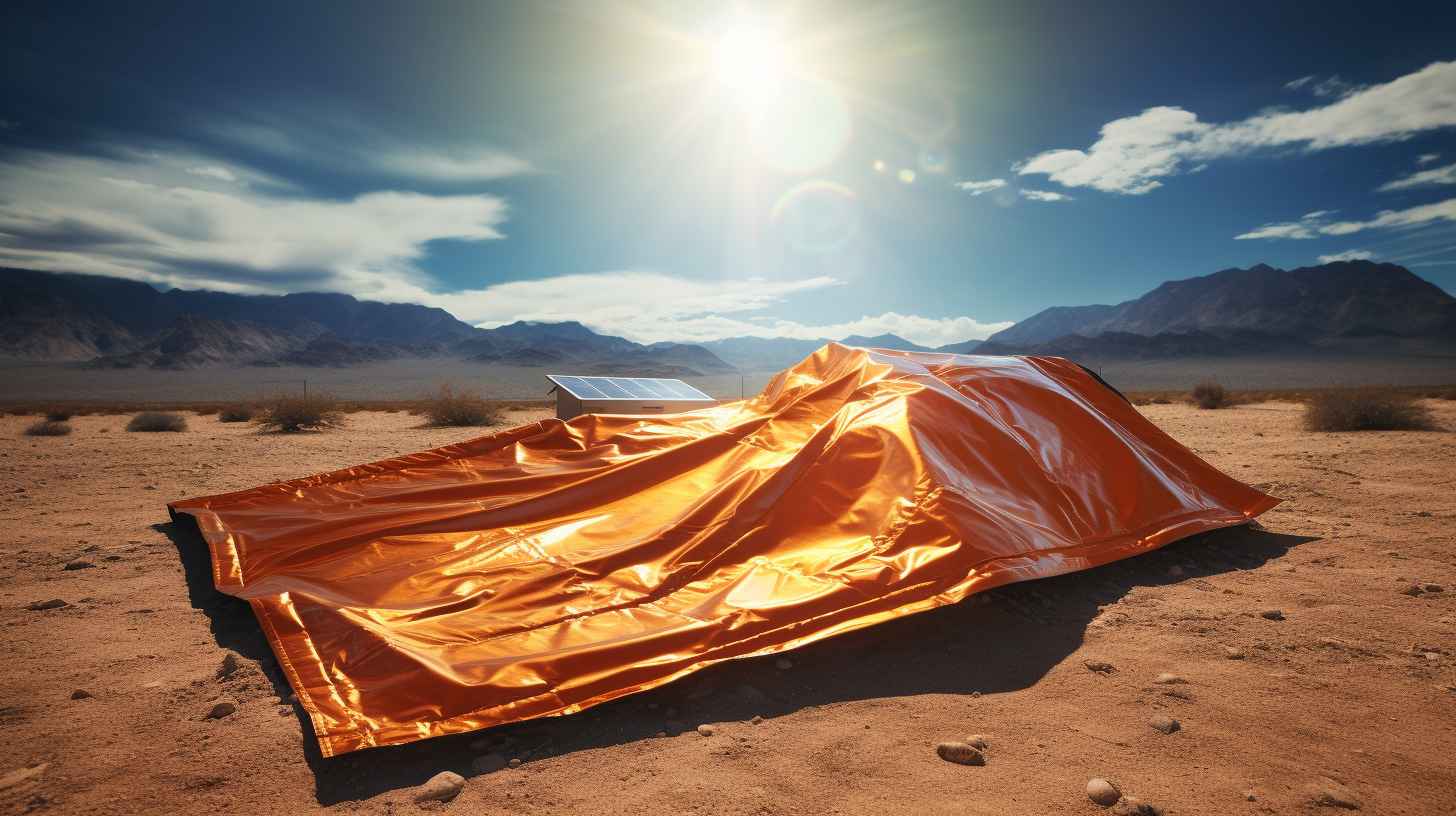
How Do Camping Solar Blankets Work

Do you ever wonder how camping solar blankets work?
Well, let’s shed some light on this innovative technology. These blankets utilize solar cells to harness the power of the sun and convert it into electricity.
Through the photovoltaic effect, sunlight is transformed into usable energy. Factors like sunlight intensity and angle affect the efficiency of these blankets.
By using camping solar blankets, you can enjoy the benefits of portable and sustainable electricity during your outdoor adventures.
Key Takeaways
- Solar blankets convert sunlight into electricity through the photovoltaic effect.
- Factors such as angle of sunlight exposure and weather conditions can affect the efficiency of solar blankets.
- Camping solar blankets are portable, lightweight, and provide a clean and renewable source of energy.
- Solar blankets are commonly used for camping, hiking, RV living, emergency preparedness, outdoor events, and off-grid living.
Solar Cells and Their Role
Solar cells are the essential components of camping solar blankets, as they convert sunlight into electricity to power your outdoor adventures. These small devices, also known as photovoltaic cells, utilize solar cell technology to harness the power of the sun and convert it into usable energy.
The cells are typically made from silicon, a semiconductor material that absorbs photons from sunlight and releases electrons, creating an electric current. This portable energy solution is highly efficient and reliable, making it the perfect choice for camping trips or any outdoor activity where access to electricity is limited.
The solar cells are designed to be lightweight and flexible, allowing them to be easily integrated into the camping solar blanket. With advancements in solar cell technology, these portable energy solutions are becoming even more efficient and affordable, making them an excellent choice for environmentally-conscious adventurers.
Photovoltaic Effect Explained
To understand how camping solar blankets work, you need to grasp the concept of the photovoltaic effect. This is the process by which light is converted into electricity.
Here are some key points to help you understand the photovoltaic effect:
- The photovoltaic effect occurs when photons from the sun’s rays hit the solar cells in the camping solar blanket.
- The photons transfer their energy to the electrons in the solar cells, causing them to become excited and break free from their atoms.
- These free electrons then flow through the solar cells, creating an electric current.
- The electric current is then captured and stored in a battery for later use.
The applications of the photovoltaic effect are vast and include solar power systems for homes and businesses, as well as portable solar panels for camping and outdoor activities.
Future advancements in solar technology aim to improve the efficiency and affordability of solar panels, making them more accessible to a wider range of people and reducing our reliance on fossil fuels.
How Sunlight Is Converted Into Electricity

When sunlight hits the solar cells in a camping solar blanket, the photons from the sun’s rays continue the process of converting light into electricity. This conversion is made possible by the solar panel technology used in the blanket. The solar cells in the camping solar blanket are made of a semiconductor material, typically silicon, which has the ability to convert sunlight into electricity through the photovoltaic effect. This effect occurs when photons from the sun’s rays strike the solar cells, causing the electrons in the semiconductor material to be excited and create an electric current. The solar energy conversion process can be summarized in the following table:
| Step | Description |
|---|---|
| 1 | Sunlight hits the solar cells in the camping solar blanket. |
| 2 | Photons from the sun’s rays strike the solar cells. |
| 3 | Electrons in the semiconductor material of the solar cells are excited. |
| 4 | The excited electrons create an electric current. |
| 5 | The electric current is collected and used as electricity. |
Through this process, camping solar blankets harness the power of the sun to provide a portable and renewable source of electricity for outdoor activities.
Factors Affecting Solar Blanket Efficiency
One important factor affecting the efficiency of camping solar blankets is the angle of sunlight exposure. The angle at which the sunlight hits the solar blanket directly affects the amount of energy that can be captured and converted into electricity.
Here are two sub-lists detailing factors that can impact the efficiency of solar blankets:
Solar Blanket Material
- The type and quality of the material used in the solar blanket can greatly affect its efficiency. High-quality materials, such as monocrystalline silicon or thin-film solar cells, tend to have higher conversion efficiencies.
- The thickness and transparency of the solar blanket material can also impact its efficiency. Thinner and more transparent materials allow more sunlight to pass through, increasing energy capture.
Impact of Weather Conditions
- Weather conditions, such as cloud cover or shading, can significantly affect the efficiency of camping solar blankets. Cloudy or overcast days can reduce the amount of sunlight reaching the blankets, resulting in decreased energy production.
- Similarly, shading from trees, buildings, or other objects can obstruct sunlight, causing a decrease in efficiency. It’s important to position the solar blankets in areas that receive maximum sunlight exposure throughout the day.
Benefits of Using Camping Solar Blankets

Experience the numerous benefits of using camping solar blankets. These innovative blankets offer a range of advantages, making them an essential tool for outdoor enthusiasts.
One of the key benefits is their portability. Unlike traditional solar panels, camping solar blankets are lightweight and compact, making them easy to carry and store. This makes them perfect for hiking, backpacking, and other outdoor activities where space and weight are at a premium.
Additionally, camping solar blankets contribute to environmental sustainability. By harnessing the power of the sun, they provide a clean and renewable source of energy. This reduces reliance on fossil fuels and helps to minimize your carbon footprint.
With their portability advantages and environmental sustainability, camping solar blankets are a must-have for any outdoor adventure.
Conclusion
So, next time you’re out camping and need a reliable and efficient source of power, don’t forget to bring along your camping solar blanket.
Its advanced solar cells harness the power of the sun and convert it into electricity through the photovoltaic effect.
With factors like sunlight intensity and angle taken into account, these blankets ensure maximum efficiency.
Enjoy the convenience and peace of mind that comes with having a portable and sustainable power solution right at your fingertips.
Disclaimer: Some information is provided through AI. Users should always conduct their own research and consult with qualified professionals before making any decisions.Affiliate information declaration: We may earn revenue from the products referred on this page and participate in affiliate programs.


